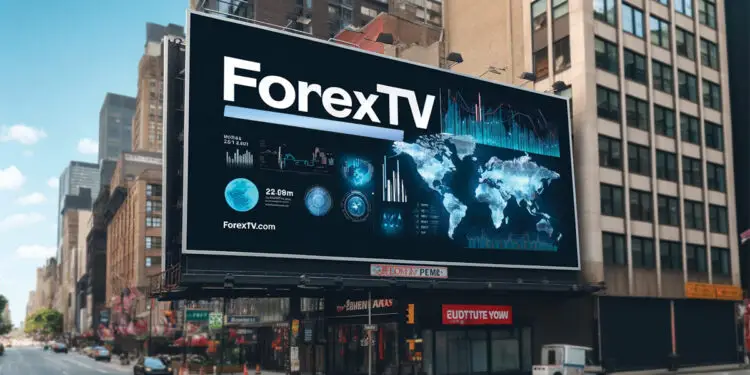In This Article
Understanding How to Advertise Your Spirits Brand
Advertising remains a crucial aspect for spirits producers aiming to grow their brands. With various advertising methods available, choosing the most effective one can be challenging. This article will analyze the effectiveness, costs, and suitability of different advertising media. We will cover television/cable, print, outdoor, radio, and online advertising. Each medium will be comprehensively defined, assessed for brands with limited distribution markets, and the associated costs for creating the messaging will be discussed.
I have been involved in the spirits business from the tender young age of 10. My father and my family owned and operated several restaurants and liquor stores. I have been a bartender and bar manager at several major venues in three states and for the past ten years, I have been a multiple award-winning spirits producer. As a young man, I was the head of media for Bloomberg Financial markets and have run marketing for billion dollar global corporations. Despite all of this experience, there are times that I find myself scratching my head over the complexities of advertising and marketing.
This is a good place to start making some distinctions about advertising, marketing, promotions and public relations. Understanding how to advertise your spirits brand is part of marketing and distinct from promotions and public relations. Marketing is your overall strategy and the tools or tactics used in marketing include: advertising, promotions and public relations. In this article we’ll focus on how to advertise to build your spirits brand.
Television/Cable Advertising
Definition and Overview
Television/cable advertising involves promoting products through TV commercials. These commercials are broadcast during specific programs or at certain times. This medium can reach a broad audience and create a strong brand presence.
Costs and Effectiveness
Television advertising costs vary widely. A 30-second national TV spot can range from $200,000 to over $1 million, depending on the time slot and program. Cable TV ads are generally cheaper, ranging from $5,000 to $50,000 for a similar spot. The effectiveness of TV advertising depends on the audience reach and frequency of the ads. High viewership programs can lead to increased brand awareness and sales.
Suitability for Limited Distribution Markets
For brands with limited distribution, local TV advertising might be more suitable. Local TV ads cost between $200 and $1,500 per 30-second spot. These ads can target specific geographic areas, making them more cost-effective for smaller brands. However, the reach is limited compared to national ads.
Additional Costs
Creating a TV commercial involves production costs, which can range from $2,000 to over $50,000. Costs include scripting, filming, editing, and sometimes celebrity endorsements. For high-quality production, the costs can increase significantly.
Print Advertising
Definition and Overview
Print advertising includes ads in newspapers, magazines, and other printed publications. This traditional method allows for targeted advertising in specific publications related to the spirits industry.
Costs and Effectiveness
The cost of print ads depends on the publication’s circulation and ad size. A full-page ad in a national magazine can cost between $50,000 and $250,000. In local newspapers, the cost ranges from $1,000 to $10,000. Print ads are effective for targeting specific demographics and readers of particular publications. However, the declining readership of print media can affect ad reach.
Suitability for Limited Distribution Markets
Print advertising is well-suited for brands targeting niche markets or specific geographic areas. Local newspapers and industry-specific magazines can provide targeted exposure. However, the effectiveness is limited by the declining popularity of print media.
Additional Costs
Creating a print ad involves design and production costs, typically ranging from $500 to $5,000. Costs include graphic design, photography, and copywriting. High-quality, eye-catching designs can enhance the ad’s effectiveness.
Outdoor Advertising
Definition and Overview
Outdoor advertising includes billboards, transit ads, and posters placed in high-traffic areas. This method provides continuous exposure to a wide audience.
Costs and Effectiveness
Billboard advertising costs range from $750 to $14,000 per month, depending on the location and size. Transit ads can cost between $500 and $10,000 per month. Outdoor ads are effective for creating brand visibility and reaching commuters. However, measuring their direct impact on sales can be challenging.
Suitability for Limited Distribution Markets
Outdoor advertising is suitable for brands targeting specific local markets. Placing ads in strategic locations can enhance local brand recognition. However, the reach is limited to the geographic area of the ad placement.
Additional Costs
Creating outdoor ads involves design and production costs, ranging from $1,000 to $10,000. Costs include graphic design, printing, and sometimes installation. High-traffic locations may also incur higher rental fees.
Radio Advertising
Definition and Overview
Radio advertising involves airing commercials on radio stations. These ads can target specific times and programs, reaching a broad audience.
Costs and Effectiveness
Radio ad costs vary depending on the station and time slot. A 30-second ad on a popular station can cost between $200 and $5,000. Radio ads are effective for reaching commuters and specific demographics. However, the lack of visual elements can limit their impact.
Suitability for Limited Distribution Markets
Radio advertising is well-suited for brands targeting local markets. Local radio stations can provide targeted exposure at a lower cost. However, the effectiveness is limited by the audience’s ability to recall the ad.
Additional Costs
Creating a radio ad involves production costs, typically ranging from $300 to $1,000. Costs include scriptwriting, voice talent, and recording. High-quality production can enhance the ad’s effectiveness.
Online Advertising
Definition and Overview
Online advertising includes various methods such as social media ads, search engine marketing, and display ads. This medium allows for targeted advertising and measurable results.
Costs and Effectiveness
Online advertising costs vary widely. Social media ads can cost between $0.50 and $5 per click, while search engine ads range from $1 to $10 per click. Online ads are highly effective for targeting specific demographics and measuring engagement. However, the competition for ad space can drive up costs.
Suitability for Limited Distribution Markets
Online advertising is highly suitable for brands with limited distribution. Targeted ads can reach specific audiences, making them cost-effective. However, a well-planned strategy is required to maximize effectiveness.
Additional Costs
Creating online ads involves design and production costs, typically ranging from $100 to $5,000. Costs include graphic design, video production, and copywriting. High-quality, engaging content can significantly enhance ad performance.
Earned Media
Definition and Overview
Earned media refers to publicity gained through non-paid channels. This includes media coverage, social media mentions, and customer reviews. Unlike paid advertising, earned media relies on organic promotion and third-party endorsements.
Costs and Effectiveness
Earned media is cost-effective since it does not involve direct payment for coverage. Instead, it requires investment in public relations, content creation, and social media engagement. The effectiveness of earned media can be significant, as it leverages credibility and trust from third-party sources. Positive media coverage and word-of-mouth recommendations can enhance brand reputation and visibility.
Suitability for Limited Distribution Markets
Earned media is highly suitable for brands with limited distribution. By focusing on building relationships with local media, bloggers, and influencers, smaller brands can gain valuable exposure. Local events, community involvement, and unique brand stories can attract media attention and generate organic promotion.
Additional Costs
While earned media does not involve direct ad costs, it requires investment in public relations and content creation. Hiring a PR agency or an in-house PR specialist can cost between $3,000 and $10,000 per month. Additionally, creating high-quality content, such as press releases, blog posts, and social media updates, incurs costs. These costs can range from $500 to $5,000 per month, depending on the content’s complexity and frequency.
Strategies for Success
Building Relationships: Develop strong relationships with journalists, bloggers, and influencers in the spirits industry. Regularly share newsworthy updates and unique brand stories.
Content Creation: Create compelling content that resonates with your audience. This includes press releases, blog posts, and engaging social media updates.
Leveraging Social Media: Use social media platforms to engage with customers and encourage them to share their experiences. User-generated content and customer reviews can significantly enhance earned media efforts.
Hosting Events: Organize events, tastings, and community activities to generate buzz and attract media coverage. Local events provide opportunities for direct engagement with the target audience and media.
Monitoring and Responding: Monitor media coverage and social media mentions. Respond promptly to customer feedback and media inquiries to maintain a positive brand image.
Recap of Earned Media
Earned media offers a cost-effective and credible way to enhance brand visibility and reputation. By focusing on public relations, content creation, and social media engagement, spirits producers can generate valuable organic promotion. This approach is particularly suitable for brands with limited distribution, as it leverages local media and community involvement. Investing in strong relationships, compelling content, and active social media presence can significantly boost earned media efforts and contribute to overall brand success.
Key Takeaways
Choosing the right advertising method depends on the brand’s goals, budget, and target market. Television/cable advertising provides broad reach but can be costly. Print advertising targets specific demographics but faces declining readership. Outdoor advertising offers continuous exposure but limited reach. Radio advertising is cost-effective for local markets but lacks visual impact. Online advertising provides targeted reach and measurable results but requires a strategic approach. By understanding the costs and effectiveness of each medium, spirits producers can make informed decisions to advertise their brands successfully.
Since its inception in 2003, ForexTV has been a global leader in forex news and has expanded its news coverage to multiple industries. ForexTV is now one of the most recognized brands in global financial news. Mr. Kelly was also the creator and founder of Retirement Intelligence.
Mr. Kelly is an expert in data modelling, technical analytics and forecasting. Tim has extensive experience in online marketing, search engine optimization, content development and content distribution. He has consulted some of the top brokerages, media companies and financial exchanges on online marketing and content management including: The New York Board of Trade, Chicago Board Options Exchange, International Business Times, Briefing.com, Bloomberg and Bridge Information Systems and 401kTV.
After leaving management of ForexTV in 2018, he continues to be a regular market analyst and writer for forextv.com. He holds a Series 3 and Series 34 CFTC registration and formerly was a Commodities Trading Advisor (CTA). Tim is also an expert and specialist in Ichimoku technical analysis. He was also a licensed Property & Casualty; Life, Accident & Health Insurance Producer in New York State.
In addition to writing about the financial markets, Mr. Kelly writes extensively about online marketing and content marketing.
Mr. Kelly attended Boston College where he studied English Literature and Economics, and also attended the University of Siena, Italy where he studied studio art.
Mr. Kelly has been a decades-long community volunteer in his hometown of Long Island where he established the community assistance foundation, Kelly's Heroes. He has also been a coach of Youth Lacrosse for over 10 years. Prior to volunteering in youth sports, Mr. Kelly was involved in the Inner City Scholarship program administered by the Archdiocese of New York.
Before creating ForexTV, Mr, Kelly was Sr. VP Global Marketing for Bridge Information Systems, the world’s second largest financial market data vendor. Prior to Bridge, Mr. Kelly was a team leader of Media at Bloomberg Financial Markets, where he created Bloomberg Personal Magazine with an initial circulation of over 7 million copies monthly.









